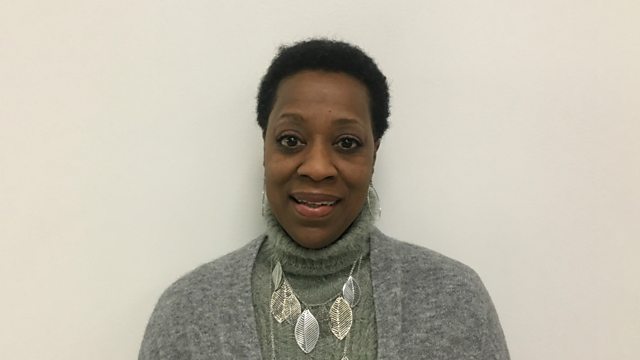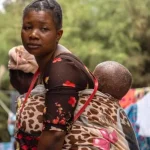Stephanie Summerville wanted a job after she had left university without completion and had just buried her late father who was her world. Upon returning to the family home in Evansville, Indiana, mid-west of the USA, and devastated by the sequence of overwhelming events, she’d moved out of the family home and spent days on end in a sofa in the cold blue garage of the house.
For as long as 12 to 14 hours, Stephanie would slumber in depression everyday on her makeshift sofa. But one day, motivated ironically by the state of her mind, where all hope was essentially non-existent; she, with tremendous effort, pinned pinned the last bit of hope she had and started a job hunt anticipating personal liberation.

Published paper after published paper she would search for a job and eventually came across an advertisement for one she thought involved just sitting. It was the dream job.
“I opened the paper and it was like a chorus of angels in my head because I saw the headline, and it said: ‘Sitters wanted!’. I had no idea what a sitter was but I was like if it involves sitting I can do that right now. I can sit so well.”
It turned out that the role called ‘sitting’ was part of an emerging job market where people needed in-home healthcare aids. They were people who helped to do all non-medical things for others who were convalescing at home. A sitter would help family members change bedsheets of the patient, feed the patient, give them their medicine, and sit with them to make sure they didn’t harm themselves.
For then 21-year-old, Stephanie, her job would be to be present to help the recovering in their homes. Simple.
But it wasn’t.
Her first job, after registering with the advertising agency, was located in the white side of town. A place she had never been to before because it was the side of town that black people wouldn’t go to.
“It was a white working class side of town and we did have people who were at the very least prejudiced but you could find people who were racist. They may have not been overt, they may not have been out but it was dangerous.”
This side of town was known as one of the ‘sundown towns’ in Indiana.
A sundown town was a phrase describing a place where black people weren’t allowed after dark. Black people who did end up in such towns after accepted hours, were often intimidated, arrested or attacked according to historians. Posters would be put up at the city limits to say that African-Americans would have to be out of town by sundown. Racism was actively present in the mid and northern parts of the United States as it was in full swing in the southern parts of the country. In Indiana for example, the Ku Klux Klan had been particularly active since the 20th century.

In addition to the existence of sundown towns, local policies excluded black people from living and working in these areas as well. While not all historians believe this was the extent of racism in such areas, others say the racist legacy lived on even after the Civil Rights Act was passed in 1964.
“So it was like you didn’t want to go looking for trouble. Most African-Americans stayed where they were on their side of town because you didn’t want to wander to a side of town where people would actually do that to you. We knew what was up and as a community, we weren’t going to dare test the waters. But my job was in the side of town everyone was weary of.
But I had a job assigned by the agency. My head really wasn’t there. It was about the fact that I have a job. I figured the agency knew where I was, so let’s go to this place.
Once Stephanie got to her first client’s house, she met the woman who ordered for a sitter.
“Go away, we don’t want you here!” Stephanie recalls the woman saying. But after an explanation from Stephanie and a follow-up fallacious argument about being given an African-American sitter, with the agency over the phone, the woman conceded and allowed Stephanie into her house. Walking through door to door like portals Stephanie came to meet the woman’s husband who she was to care for but the woman said nothing.
Immediately, Stephanie says she got right to work, ignoring the woman’s silence. Although she noticed, in the distance through the rooms on a sofa, the woman stared straight at her while she worked. Not thinking of anything of it, she worked to clean up the man on the gurney suffering from Cirrhosis of the liver, in its final stages.
“The woman was standing in the doorway with her arms folded, just sort of looking at me and she had a poker face. She had no emotion to give anything away but I could tell something was not quite right. But because of the depression I was in, I couldn’t quite connect the dots.
In Indiana however, I was taught to normalise situations that were very uncomfortable. So that’s what I started to do. I looked at her and I said ‘I’ve got this now’ because I didn’t actually know what to say to her.”
As Stephanie sat down at a table and chair, across on the other side of the house, the woman sat down on her sofa. They perfectly lined up and could see each other. Attempting to normalise the uneasiness that filled the house, Stephanie began to take notice of the decorations and paraphernalia in the house.
“As I was taking in the armoire and all the stuff, I started to notice behind the man’s bed was this floor to ceiling confederate flag and as I was looking around I happened to notice that they had a beautiful antique coat rack with the filigree rounded hooks. On the coat rack, starched and covered in plastic was a white robe with a patch and a cross on it and in its own separate plastic covering, was a white hood with eye holes.”
It didn’t dawn on her that it was a ku klux klansman robe.
“I never thought to myself, ‘oh this is a klansman’s robe’. I was rather like ‘wow, look at the detail of the button hole stitching of the eye holes on that hood! That is what was in my head but at the same time, somewhere else in my head trying to tell me something was not right.
I looked at the woman and she’s still staring at me. There was something lit up in her eyes and it’s something quite menacing but I can’t figure it out because once again nothing was clicking. My primary focus was I really wanted this job to work but I had to first escape what was going on and my emotions for the job to work.”
Thinking it was her nerves, she went over to a table to sit down. On the table she notices what she assumed was a bible.
“As I flip through this book, I start reading and recognise that this is not a bible. This is some sort of manifesto about the supremacy of the white race and how people who are not white should be annihilated. I immediately shut the book and look back down the hallway, at the woman, and then I look up at the confederate flag and when I get to the robe, that’s when I started putting the pieces together and then it dawned on me that I was in the house of an honest to God klansman and I am a black woman.
It was at that moment when the man’s breathing aid start’s beeping and I had to return to clean him up again which I was thankful for. I just wanted to do something that was normal again to get on with the day. Looking back now, I should have left because when I closed the book, I looked at the woman and she looked at me finally like, ‘do you get this now?’
It was a situation beyond awkward and there was no way of normalising it anymore. It had now become potentially dangerous.”
Despite that, Stephanie said to herself that she was an overachiever who never settled for any outcome other than the one she had set out for, so she stayed on the job. She did it well and made a promise to herself that once she got enough money she would leave Evansville for good.
And she did just that.

Now an actress, singer and a storyteller, Stephanie Summerville shares her story through performance with the Moth Organisation which is headquartered in New York, USA.














